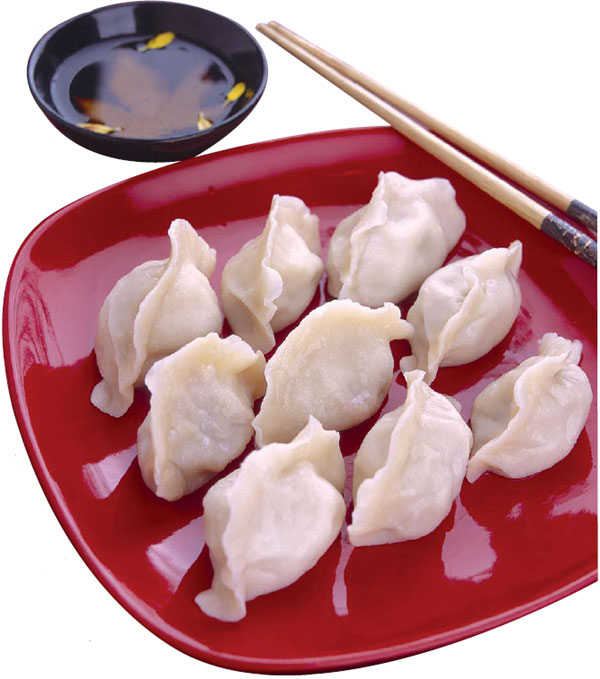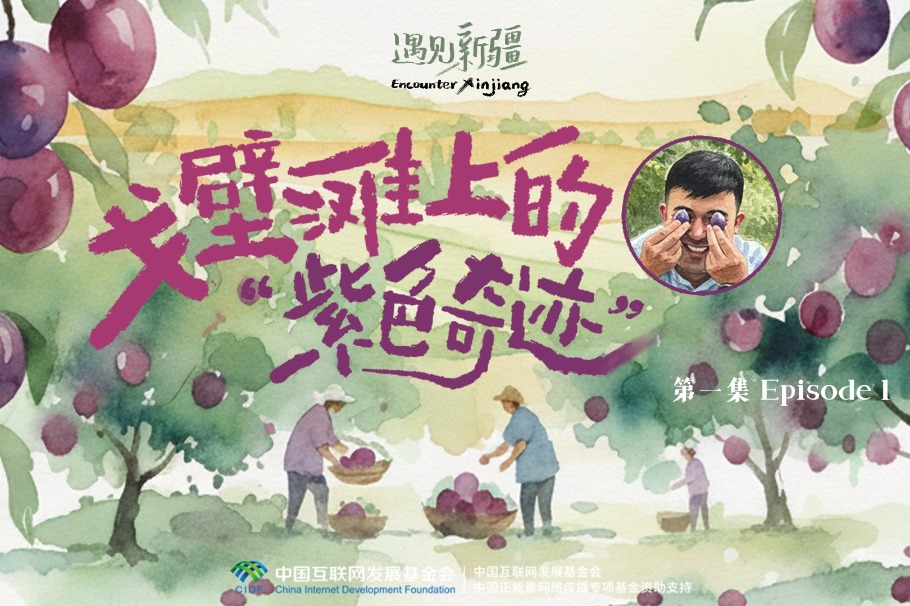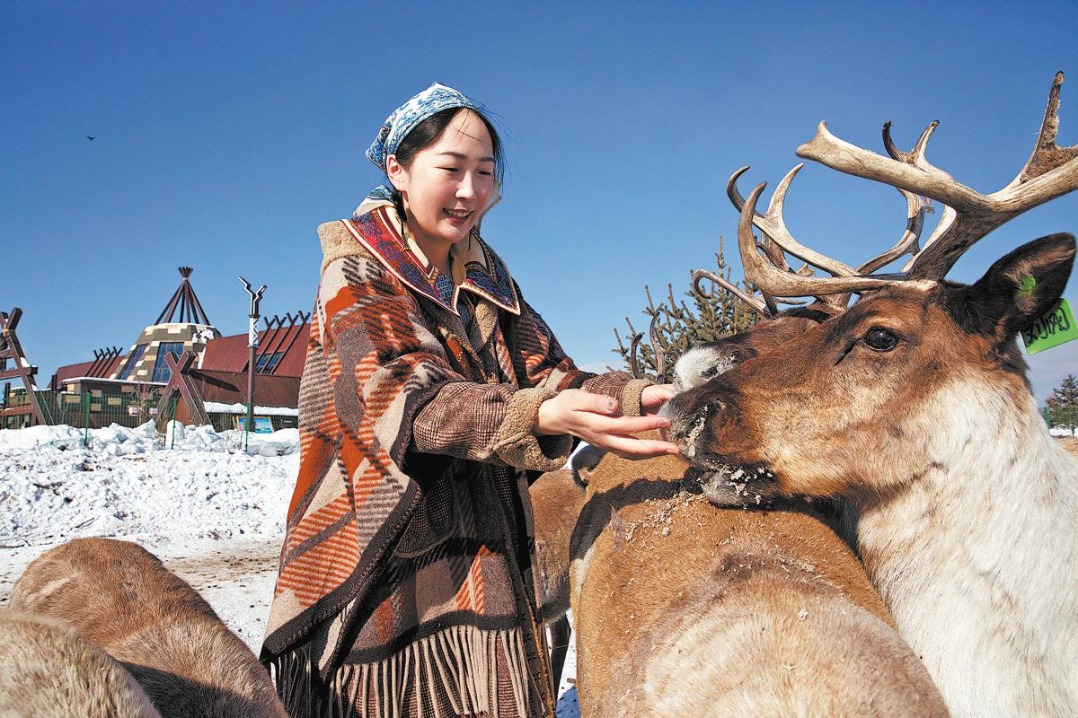A dumpling for every season

Here's why jiaozi are consumed with gusto during so many Chinese holidays and festivals
How do Chinese people celebrate festivals? Even if you are not a China expert, you might have been able to guess this one: eating 饺子 (jiǎozi) thin pieces of dough with ground meat or vegetable filling, steamed or boiled (also known as dumplings).
In a country with a history of thousands of years and a diverse culinary culture, it's hard to imagine that such a commonplace item can be regarded as one of the country's most representative dishes.
It can be said without exaggeration that, at least in northern China (not all over the country - more on that later), jiaozi plays an important role in almost half of Chinese festivals. One should eat jiaozi at Chinese New Year, the fifth day of the first month according to the lunar calendar, the Autumn Commencement, the Winter Commencement and the Winter Solstice. As the Chinese saying goes: "Food is the god of the people."

Alternatively, we can conclude that when foodies really want to eat something, they can always find reasons.
The Chinese New Year
Eating jiaozi on Chinese New Year's Eve is the most important custom in northern China during Spring Festival. Families get together around a table to wrap jiaozi together in the evenings and eat them at midnight. That's because, according to ancient timekeeping customs, a day was divided into 12 two-hour periods and the period between 11 pm and 1 am was called 子时(zǐshí), or the Zi period. On New Year's Eve, the Zi period marked the transition from an old year to a new year and had a special name, 交子 (jiāozǐ), which sounded very similar to jiaozi.
What's more, the shape of a jiaozi is just like a gold yuánbǎo (元宝, ingot), an ancient currency, so people eat jiaozi at the dinner with the wish that they will have prosperity in the new year. Some cooks will hide a coin inside a jiaozi and whoever happens to find it is said to have good luck in the coming year.

The fifth day of the first month in the lunar calendar
Just five days after New Year's Eve, people eat jiaozi again. This custom is called "breaking the fifth", or 破五 (pòwǔ), because there are so many taboos during the Spring Festival period such as doing needlework, breaking things, getting your hair cut and so on. However, after the fifth day after the New Year, those taboos don't exist anymore, so people celebrate by eating jiaozi. A special custom exists in the city of Tianjin and surrounding areas, where people believe that when you wrap jiaozi, you need to press the wrapper edges tightly so that people who like to talk about you behind your back will have their mouths zipped in the coming year.
The start of the Fu days
The Fu days can be understood as the "dog days" of the Chinese summer, which usually last 30 or 40 days between the traditional calendar seasons of "Little Heat" and "Great Heat". The first day of Fu is another jiaozi day. Because the Fu days are the hottest time of the year, people usually lack appetite, so something delicious is needed to stimulate their taste buds. Jiaozi, a popular food that many people liked since ancient times, became the optimal choice. And because the Fu days took place during the start of harvest, every household could afford the good meal.
The start of autumn
When the high temperature that takes away people's appetites finally drops, cool autumn arrives, and it's definitely worth celebrating. On the Autumn Commencement day of the lunar calendar, it is believed people should eat something good, especially meat, to 贴秋膘 (tiē qiūbiāo) gain autumn weight, because most people have lost some weight during the long hot summer and need to gain it back to stay healthy during the winter. Of course, for jiaozi lovers, dumplings with meat filling works perfectly.
The start of winter
When the weather is hot, you eat jiaozi; when it's cold, jiaozi-lovers will eat jiaozi, too. Eating jiaozi on the Winter Commencement day is one of the best-known jiaozi customs in China, and it is related to the origin of jiaozi. Though there are many folk stories explaining how jiaozi was invented, the most popular one was about the famous doctor Zhang Zhongjing. Zhang was a great practitioner of traditional Chinese medicine, who lived during the Eastern Han Dynasty (25-220). One day in winter, when Zhang was on his way home, he found many poor people had frostbitten ears, because they didn't have warm clothes and sufficient food. Zhang tried to heal their ears. He stewed lamb, peppers and some medicine in a pot, chopped them into small pieces and used them to fill small dough wrappers. Zhang named these dumplings 娇耳(jiāo'ěr), literally meaning "tender ear", and boiled them every day to feed his patients. Gradually, these patients became better and, when Spring Festival came, their ears were healed. In order to express their gratitude to Zhang, people began to imitate his recipe to make jiao'er, which later became the current jiaozi, and ate them to celebrate Spring Festival.
The winter solstice
Chinese people have long placed a great deal of importance on the winter solstice. Family members get together, worship their ancestors and eat jiaozi. Some claim the reason people eat jiaozi on this day is also to commemorate Zhang Zhongjing, while others said it's because of a goddess in ancient Chinese legend, Nüwa, who is known for creating humans and repairing a great hole that one day appeared the sky. It is said that Nüwa existed at the beginning of the world and created humans by sculpting them with yellow clay. But when she made ears for these humans, she worried that the clay would freeze and the ears wouldn't stay attached to their heads when it became cold. Therefore, she pierced their ears and used a string to fix them to their heads. So, on the winter solstice, which is the darkest and one of the coldest times of year, people make and eat the ear-shaped jiaozi in memory of Nüwa, and it's said if you don't eat jiaozi this day, your ears will freeze and drop from your head.
Jiaozi lovers can always find a reason to eat jiaozi, but the interesting thing is that it just happens in the north, where there is a tradition of eating wheat-based food. Southern people, whose traditional dishes tend to be based more on rice, are not crazy about it, even though as more people migrate around the country for work and consume mass media (such as CCTV's documentary about jiaozi as the ultimate Chinese festival food), the northern customs are becoming better known and even adopted by some southerners. However, traditionally, southerners had other choices for festivals. At Spring Festival, they eat tangyuan or fried nian'gao, traditional dishes made from sticky rice; on the winter solstice, they eat tangyuan; for Lantern Festival they of course also eat tangyuan.
There are also dishes special to certain regions; other winter solstice foods, for instance, include fried sticky rice consumed in the Jiangnan region, nine-layer rice cakes and soy flour-covered sweet round cakes made of glutinous rice paste in parts of the southeastern coast (and Taiwan), noodles and pumpkin patties in Anhui province and mutton soup in Shandong.
After all, China is a vast land so to designate one dish as the official festival food would probably lead to a civil war - but at least we can agree that the holidays are the perfect excuse to binge on all your favorite dishes.
Courtesy of The World of Chinese, www.theworldofchinese.com
The World of Chinese
(China Daily European Weekly 01/13/2017 page21)
Today's Top News
- China reports 5% GDP growth in 2025
- Sanya rises as magnet for Russian tourists
- China's steady opening-up for Asia-Pacific economic growth
- Blueprint seen as a boon for entire world
- 'Kill line' an inevitable outcome of US system
- Fusion energy drive entering a decisive phase





























